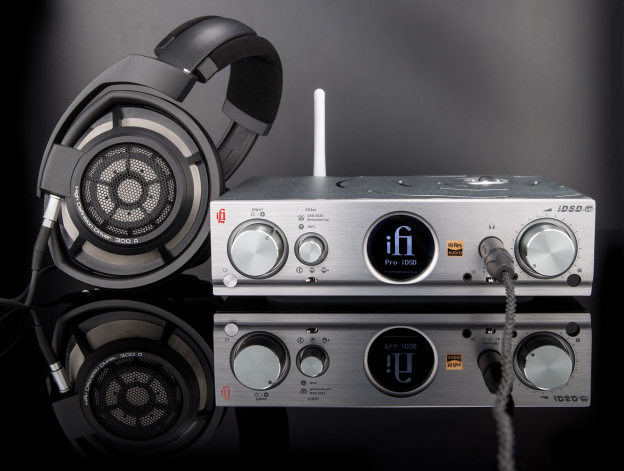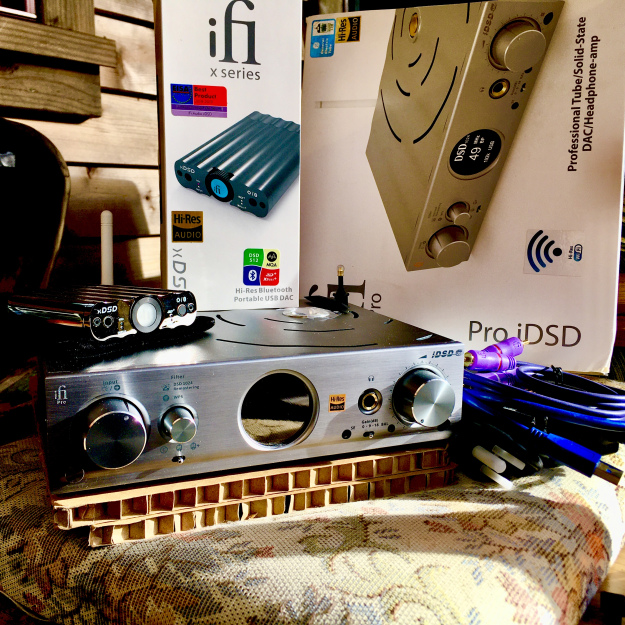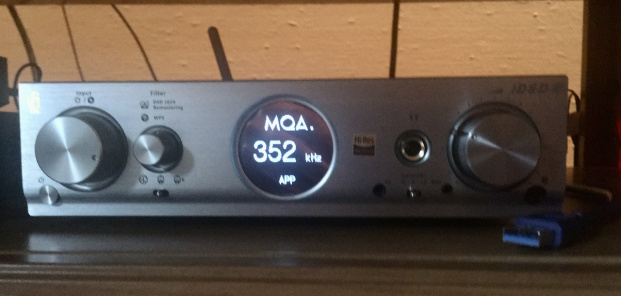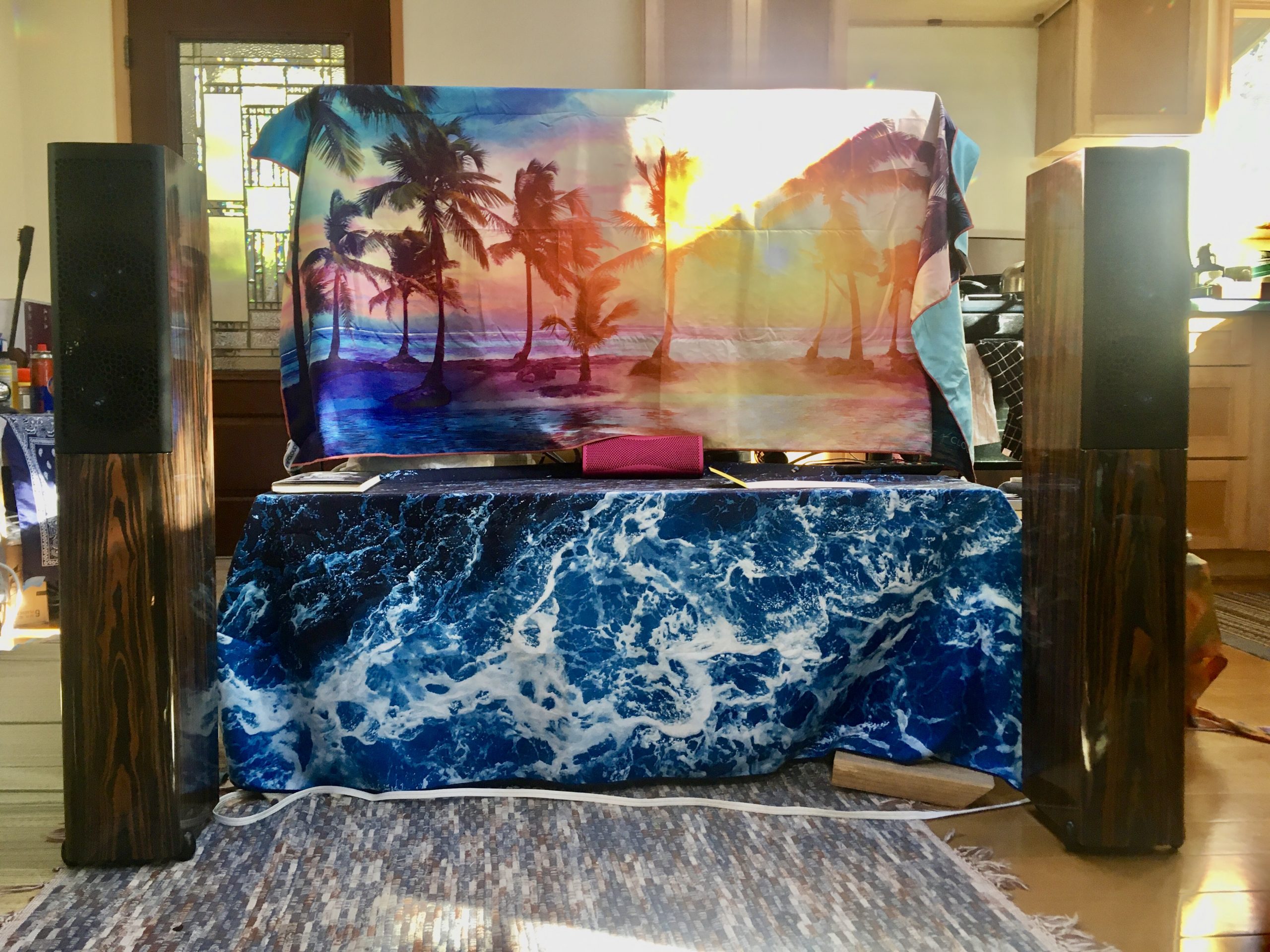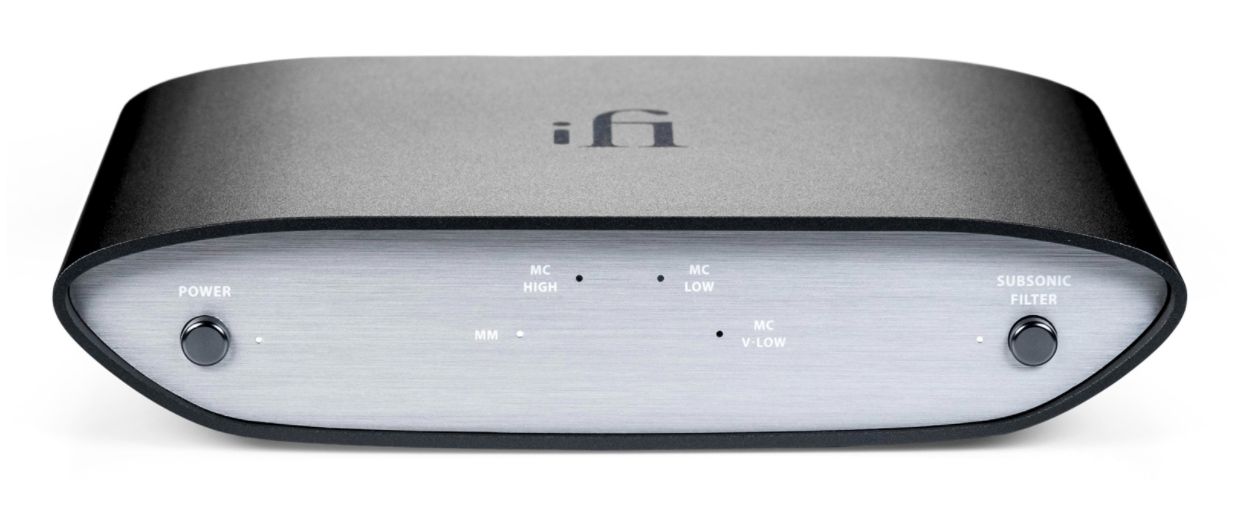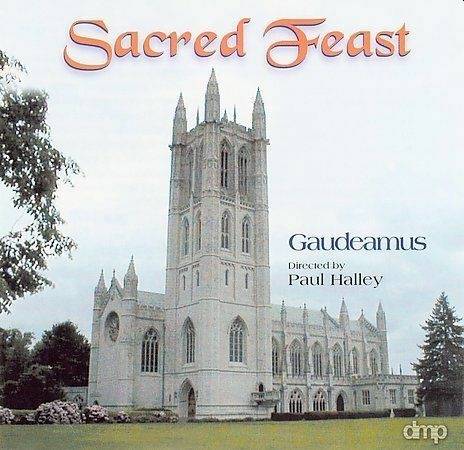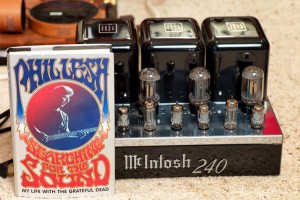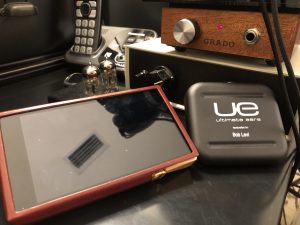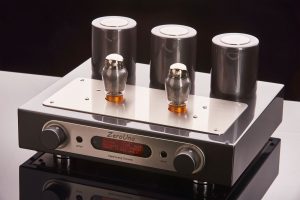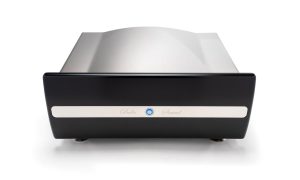The last 2 years of computer audio (2017 – 2019) for listeners and musicians have been unlike anything I have seen or heard since the earliest exciting and revolutionary days of the introduction of DSD as SACDs into the market which I participated with as an album (SACD The Window released in 2003). After the SACD early years (~2000 – 2005) excitement the next step was to launch Sony DSD Disc Format downloads in 2009 with my release of The Window in stereo, followed by Crossing, and then both as multichannel 5.1 studio DSD64 masters. Keep in mind around then that Netflix streaming was still new, 5mbps Internet download speed was a marvel to have, and DSD playing on any of the 30+ million Sony Playstation3 in homes then was astonishing.
Following those years of early SACD Discs (.ISO image downloads to burn to high capacity DVD-Rs) 2013 and 2014 were the beginning of Sony's official High Resolution Audio (HRA) program removing DRM from DSD recordings and inciting many companies to create low cost DSD USB DACs and headphone amplifiers that soon flooded the market and began encouraging many to listen to excellent recordings in both DSD and PCM (24/96 and above, and DXD).
Since 2016 the introduction of MQA as both remasters for downloads and low bit rate, high resolution (unfolded up to 24/384 but delivered at about 24/48k or far less in my experience (FLAC ~700-1000kbps)), streaming from TIDAL and other services further puts the inexpensive reality of the highest quality studio masters in the accessible hands and ears of music lovers from something as simple to use as an iPhone or Android smartphone, tablet, or from laptop or desktop. Hi-res from a smartphone streaming from the internet. Who would have guessed? No one did, not too long ago.
On the high end of gear in these categories, and as described in this post regarding iFi Audio's Pro iDSD product released in 2018, there are products now available that can be connected to home studio setups delivering bit-perfect transmissions of encoded MQA and 1-bit DSD over WiFi as well as DSD1024 resampling of any streaming source such as Spotify (from 160k up to 320k through the Internet to your phone). These same standalone receiving DAC/DLNA/AirPlay/Google Cast units can also decode MQA from a connected computer (via WiFi or USB), or internet streaming hi-res TIDAL masters. None of this was imaginable in 2009, or 2013, or 2016, let alone anytime before that.
iFi Audio Pro iDSD DAC/streaming/preamp and xDSD mobile DAC/headphone amp
Jump To The Point – What Do I Get Reading This?
You get to imagine living and/or working in an environment where you can play any music you like in any audio format from any device you might have (including your Smart TV or Apple TV or CD/DVD player) through your stereo setup or headphones with the best sound you may have ever heard from the exact same music your ears may already know very well. I believe it will sound better to you than it ever has before, even though the listening room, the headphones, the stereo or studio monitors you are using may not have changed at all.
What's changed is what I'll call the digital audio cleaning and grooming needed to create an excellent quality analog rendition of the music, as they say, "as the artist intended." Here is one artist musician who agrees this is finally possible in a single box regardless of the source or format of the data or the destination of the sound delivery (headphones, PA, stereo, studio monitors).
Personally, I think that you get the best sound from your own digital album/cd/streaming library collection, better than ever before, by routing and refactoring the audio through the iFi Pro iDSD.
The iFi Audio Pro iDSD digital to analog converter provides an incredibly effective and authentic delivery of analog audio from virtually any digital source using its unique and highly progressive combinations of filtering, DSD1024 resampling, analog tube preamplification, and balanced outputs with headphone impedance matching.
For the first time, what's commonly referred to as hi-res computer audio requires no computer to play digital audio from any internet stream, both lossy and lossless into perfectly natural and studio quality analog music through your headphones or speakers. And there is no Bluetooth; amen to that too!
All of this can take place over your local WiFi setup in which the Pro iDSD acts as a DLNA or UPnP (AirPlay or Google Cast) endpoint and in fact can extend your Internet router's WiFi range to allow local devices like smartphones receive streaming music from favorite sources like Spotify, TIDAL, Pandora, Apple Music, Amazon Prime. In my test the Internet WiFi router was located upstairs with a slightly weak 802.11 signal for smartphones downstairs. So I had the Pro iDSD located downstairs air link cleanly to the WiFi router upstairs, and had my phone and computer WiFi connect directly to the Pro iDSD unit as their WiFi router. These music source devices were then more reliable to play music consistently from, and even for any other internet access they might require.
More about the Wow….
I've read some reviews about the Pro iDSD and most of them say they don't know exactly what to call the device, or they say it has so many features that it's hard to describe. I don't have any problem describing what I see and have used the iDSD as: The ultimate media refactoring vending machine.
It plays from nearly any source and delivers to nearly any receiver endpoint for playback in a perfectly cleaned up audio state of sound quality excellence. It supports the native source format if desired (lossy MP3 or AAC, lossless CD, MQA, DSD) but has tremendous sound quality improvement options as well. It is indiscriminate about what kind of music it receives and what kind of refactored music it delivers as analog. The user decides all of this, mostly in realtime, with the ability to then easily listen to the differences between the choices to nail down a preferred sound. I don't know of any other product that does this to this extent, and usually not even close.
If you play your streaming services in the same crappy 64kbps Pandora input that began in the 90s, they come out of the Pro iDSD as filtered and upsampled DSD1024 (45mbps). Stream your Smart TV movies and music or your Amazon Prime favorite shows and they get the same filter + DSD upsample (aka resample or remaster) treatment. Send your CD/DVD player audio through your Smart TV via HDMI and get the same improvements.
Stream your TIDAL Masters MQA library from your tablet or laptop and you can hear audio unfolded to 24/384k with ringing corrections on both the encoded (master) and decoded (DAC) side. Play your native DSD up to DSD1024 (wireless DSD64 as DoP, USB wired otherwise). DSD64, DSD128, and DSD256 source masters can also be upsampled to the higher DSD bitrates.
Use the DLNA or AirPlay or Google Cast connections to send all your music from your smartphone to the Pro iDSD via reliable and extended distance WiFi. No more Bluetooth woes! Have your MP3 and CD music filtered through iFi's innovative and effective GTO filter to work through some of the same PCM ringing problems as MQA does before DSD resampling and converting to analog to your headphones.
Enjoy a tube-warmed preamp sound for all of it!
The ultimate media refactoring vending machine.
Much of the music you may already play comes from a phone or tablet streaming from services like Spotify, TIDAL, Pandora, Bandcamp, Apple Music, Qobuz, Deezer, any or all of them, at different times. Using iFi's Pro iDSD DAC and headphone amplifier or studio (tube or digital) preamplifier you will hear your music take on new depths and clarity and natural sounding characteristics you probably have never heard before with your own music libraries. To my ears, the digital reproductions playing through the Pro iDSD all seem to back off and just let me listen. There are no battles between what my ears hear and how my brain receives the music. It flows pure and simple.
You don't need a computer to hear this. It can come from the same smartphone you play music on everyday. Forget Bluetooth, go WiFi. It's a cleaner, bit perfect transmission (also forget about aptX and other compatibility headaches) and without a 30 foot limit (which it never is) before it stutters and drops and waits and drives you crazy. I've decried the virtues of WiFi audio over Bluetooth for years and now I have it before my very ears.
The music could also come locally stored as downloads or ripped CDs from your computer (tablet, laptop, desktop) connected via WiFi or via USB to the same iFi Pro iDSD and sound again better than you have heard it before. The player could then be Roon, JRiver, Audirvana, Amarra or others.
Why will it sound better?
If you are used to streaming less than bit perfect CD quality music from Pandora (64k free, 192k paid, lossy), Spotify (Free up to 160k and Premium up to 320k, lossy), TIDAL (Premium 320k, or HiFi 16/44.1 to 24/96 lossless), Qobuz (Premium 320k lossy, Hi-Fi 16/44.1, Sublime up to 24/192k lossless), Bandcamp (up to 256k lossy), Apple Music (up to 256k lossy including Mastered for iTunes), all of your lossy MP3 and AAC streaming music can be properly filtered to address pre- and post-ringing echoes that make digital music sound unnatural, and then get upsampled to DSD1024 (or DSD512) by the Pro iDSD and then output as analog (via analog tube preamp!) to your headphone/speakers with highly improved sound quality and listening pleasure.
All this can happen over WiFi in your home directed from a smartphone.
Lightly depress a Pro iDSD knob to instantly go from "No DSD Remaster" to "DSD Remaster DSD512″ and then once more to advance to " DSD Remaster DSD1024". If you are curious why the remaster (aka upsample, or resample) improves the sound, first I say you have to just listen to it. DSD remastering through oversampling has been at the heart of most digital audio players since you may be surprised to know the earliest portable digital players and recorders featuring 1-bit then 4- or 5- or 6- or thereabouts bit DSD (delta-sigma) converters. I'm saying that the heart of PCM digital to analog playback in commercial consumer gear has been a close DSD cousin all along, since the 90's. The Pro iDSD is a high-level Cadillac version of that root approach.
I like to think of DSD as a digital representation of an analog wave, such as you would see on an oscilloscope. This approach (Pulse Density Modulation) is as much as 1024 times the sample rate of CD. Describing the analog wave in binary storage is a very non-destructive way to reproduce the sound later through a DSD DAC. The high-sample-rate DSD conversion (remaster) of PCM masters also makes the result sound more analog like and natural to my ears. That's why I've always preferred to record to DSD in the first place, whenever possible. Now the ability to remaster everything (except MQA) to the highest DSD bitrate comes in a very nice looking 4 pound package.
Read some high level expert discussion on this by the chief creator of the iFi and AMR products: https://www.audiostream.com/content/qa-thorsten-loesch-amrifi
Prior to resampling the music source you can apply an iFi software invention called the Gibbs Transient Optimized (GTO) Digital Filter. I feel strongly this is a true landmark breakthrough for playback of non-MQA PCM digital masters and streaming music. I also use their Bitperfect+ filter option as an alternative. Rotate the knob on the front panel of the Pro iDSD anytime to change the filter being used (they offer 5 choices) and to hear the differences in real time within the same song.
What I hear with the GTO Filter and DSD resample is a huge improvement in the width of the sound stage, separating the instruments and giving them much more natural sounding attacks (impulse) and decays (sustain). The edgy sound of digital audio a la CD quality which has plagued my ears since it was introduced around 1981 is no longer edgy. It's suddenly a real sound, as if people were actually playing the instruments I'm hearing in the room I'm sitting in. Singing and breathing are similarly more relaxed and natural sounding. I also hear distinct improvements in this same direction between the DSD512 and DSD1024 remasters, preferring DSD1024 as the most natural. Some music I've listened to through the Pro iDSD sounds best to me using their Bitperfect+ filter instead of GTO. I would need to continue listening to and comparing these filters to decide when and why one filter may excel in natural sounding results over another and if there is any consistency to their different uses.
I want to add here my preference for the Tube switch selection in the Pro iDSD, because once again there are distinct natural differences to my ears between how deployment of the J-FET all-valve Class A output featuring two GE5670 tubes warm the resulting sound (of usually acoustic or ambient style music genres as my preference) and get my vote over solid state or the Tube+ (added natural harmonic distortion) alternate choices. Slide the switch on the front panel anytime to instantly hear these differences.
All of this is based on the premise of working with a good recording and production master in the first place. But in all fairness, many recordings that sound crappy through normal CD player setups, will sound improved and even good through, say, a Spotify or TIDAL stream of them (MP3-320 or lossless 16-44.1) into the Pro iDSD streaming DAC/preamp. I'm starting to think of this task performed as audible cleanup, a series of steps (highest DSD resample, best filter, tube preamp) that deliver easy to hear improvements on the sound delivered to your speakers or headphones.
It's in the Apps
I have used numerous music player apps on my iPhone to control playback through the Pro iDSD, it being set in its "Apps" mode through a front panel knob selection of inputs. Again these apps are not delivering audio via Bluetooth, which is not present in any form on the device. Wireless audio is always 802.11 WiFi, which has been sorely overlooked by the digital music consumer product manufacturers, and largely overlooked by prosumer and studio gear makers. Another important topic for another day.
The most complete solution I have found for iOS and Android as a music player capable of providing access to the user's libraries of music online, including TIDAL and Qobuz, as well as saved music on the phone, Dropbox, iCloud, or OneDrive is called mconnect from Conversdigital Co., Ltd. This app literally connects any music/video/photo media server to any UPnP or Google Cast (Chromecast) device. It plays MQA Masters on TIDAL as well. Voila!
With that app in hand, I can connect my iPhone to the Pro iDSD as UPnP and log into my TIDAL or Qobuz account and stream MQA or any other music to the studio playback. I can also send my Apple Music library of albums stored on the iPhone itself to the same destination including MQA playback. (Please note here that unlike what others have mistakenly claimed, MQA is not an audio format which is technically referred to as a codec. MQA is an encoding that can be applied to any of the common lossless PCM audio codecs available, the most popular being FLAC, ALAC (Apple compressed lossless), WAV and AIF. This is significant because I can download MQA masters as 24/44.1 or 24/48k ALAC files and even Apple Music/iTunes will acknowledge them and store them on my iPhone without even knowing they are MQA!) All of this happens over WiFi allowing me the freedom of moving anywhere I'm connected including outdoors.
A video by Owen Delehedy at iFi Audio on how to setup mconnect for playback through the Pro iDSD is online at: https://www.youtube.com/watch?v=zkv0_2JAdEA
You must use the paid version of mconnect, not the Lite version. It also doesn't support Spotify accounts, but the Spotify app can run concurrently on the phone with mconnect player and they cooperate. iDSD detects MQA Masters from TIDAL and decodes up to the full 24/384k depending on the resolution of the source recording being streamed.
mconnect app can direct play of DSD and FLAC from the phone as well, and supports Gapless playback. It will run on iPhone, iPad, Android phone and tablet. It also supports AirPlay-compatible devices Apple TV, Airport Express, AirPlay Audio. You can render on Smart TV, and other UPnP supported Audio and receivers.
You can create mconnect Playlists that contain songs from any mix of servers you are connected to. What? Yes, you can integrate your various music libraries across servers by creating playlists choosing from any or all libraries.
In addition to mconnect player, other apps I've connected to iDSD from my iPhone using AirPlay or DLNA include Spotify, Bandcamp, Onkyo HF Player, HiBy, Qobuz, TIDAL.
Beware – AirPlay is lossless to 16/44.1k—so your hi-res and possibly MQA won't stream via WiFi under AirPlay intact. DLNA support by players like mconnect can do better than that and can preserve DSD as well as MQA encoding. My MQA masters are folded to 16/44.1k so they are preserved perfectly well under the lossless delivery of TIDAL or Qobuz to my iPhone using mconnect, then WiFi over to the iDSD via Airplay and unfolded and decoded to the stereo. "It sounds just like you are playing in the room" was what a listener with good ears said immediately.
These albums streaming to iPhone from both the Qobuz app as well as mconnect (TIDAL library) as 44.1k lossless, then sent via WiFi Airplay to the iDSD where they are recognized as MQA with DXD resolution (24/352.8k) and accordingly unfolded and decoded, sent to the Tube preamp then out to a Yamaha amp and Polk Audio stereo speakers setup in the room. Note that the streaming bitrate for the various songs are in the 700-800kbps range as FLAC! That is roughy 1/2 of the bitrate of a CD (1411kbps). MQA's tech advances in delivering the highest res PCM with correction for ringing at the lowest bitrates is a big part of what makes the past 2 years in computer audio so fantastic. 700kbps streamed into your phone or computer becomes approx. 17340kbps (24/352.8k) unfolded and played through the MQA DAC. I love the math.
Rediscover your music just by listening.
What MQA Encoding and the iFi Pro iDSD streamer DAC GTO filter have in common is the ability to correct the biggest problem with PCM recordings, especially the CD 16/44.1k format we've all had to live with for too long. Both MQA and GTO filter technologies come from two different companies who have in fact collaborated, and help clean the sound you will hear in your digital music in cooperative ways. When I say "clean the sound" I am referring to the problems with PCM and the industry's decades-old (think 1980) standards for preferring to favor frequency accuracy over timing and spatial accuracy. This was done, and is still done by the industry studios and labels, despite the fact that our ears are much more sensitive to the timing and locality of sound than to frequency.
By implementing the favored brickwall filter on CD in the earliest implementation of CD, Sony and Philips imposed the burden of what is called pre- and post-echo ringing effects on all digital music listeners. The ringing artifacts are most severe on CD resolution masters (16/44.1k), and then continue to decrease with the higher resolution masters (24/88, 24/96, 24/176, 24/192, 24/352, 24/384k).
Ringing is a distortion added to the digital audio signal that echos the impulse (accentuated instrument's note or singer's voice or drumbeat you are hearing) multiple times before you ever hear the note/voice/beat itself come through the signal to your ears. Pre-echo ringing means an echo before the note is played. Even worse, the echo is an inverse unnatural sound like a tape being played backwards.
Post-echo ringing are those following the impulse. While both (pre- and post-echoes) are confusing to the ear/brain/listener, it is the pre-echo ringing effects that throw off our listening and make our ears tired and disbelieving in what they are hearing. Echoes off a wall in a room are common and natural to our ears. The post-echo ringing artifact is similar to that and so less invasive to our listening.
https://www.soundonsound.com/techniques/mqa-time-domain-accuracy-digital-audio-quality
Ringing happens over and over and over again with typical PCM masters, more so with the lower resolution masters (CD is 16 bit/44.1k) than the higher res masters (up to 24 bit/384k in the DXD category), because of the math related to the steepness of the brickwall filter attenuating all frequencies above a fixed limit (on CD this is at 22.05k or half of the 44.1k sample rate). By attenuating the frequency through the lowpass cutoff filter, echoes are imposed before and after the impulse. The severity of echoes will change with the type of filter used, hence brickwall versus minimum phase versus apodizing versus the new iFi GTO (Gibbs Transient Optimal) filter.
More info here from SoundOnSound.com: MQA Time-domain Accuracy & Digital Audio Quality
My Grandson Baseball Analogy
Imagine you are watching your grandson perfectly crouched over home base with baseball bat raised in anticipation of the pitch now being delivered. You see ball delivered and you see your grandson begin to swing. But just before the bat reaches the ball you think you hear the sound of the bat connecting, not a full impact but a shadow of that sound playing backwards. In fact you might have heard it twice or more times in quick succession. Immediately after that you see the bat connect with the ball and then hear the resounding smack! Suddenly all is well, but what did you hear before the bat struck the ball?
Your eyes saw the bat had not connected to the ball but your ears heard premonitions (echoes) of the ball to be hit. Then a split second transpired (the difference between the speed of light at your distance and the speed of sound) and you heard the familiar and expected resounding crack of a good swing connecting for a great hit. It may have been followed by tiny echoes of the event, but those were masked to your ears by the main impulse event of the ball being hit.
You don't know what you heard as the shadow of the main impulse event. Your brain didn't know what your ears were hearing. Those echoes didn't exist in the real world. It didn't happen on the field with your grandson. It was a phantom sound that threw you because you expected to hear nothing from the bat and ball until after he actually hit the ball. (I've also read about a precedence factor in the human ear/brain that claims our location recognition of sound is programmed to ignore echoes that would otherwise confuse us as to where a sound originated from after bouncing off numerous walls, floor and ceiling inside a room. If that's true, then the effect of pre-echo ringing is even worse on our disorientation of what we are trying to listen to in digital music. More on that here…)
My baseball analogy is not even describing the whole problem because it puts the listener in a vision-oriented situation which normally influences some 80% of our sensory perception. So vision in my example is partially correcting the audio problem by deciphering for the brain/viewer what is really going on visually. However when we listen to music from our favorite armchair or tatami mat we can't use our vision to correct distortions in what we are listening to. We are focused instead on the distortions and spatial discrepancies of what we are hearing. It can be hard frustrating work. Things called ear fatigue, digital glare, edgy unnatural sound are what we then suffer from.
Ringing and Filters
Welcome to the world of pre-echo ringing also known as time smearing and temporal blurring. My example of the baseball batter is the analogy of what we are subjected to with the typical CD quality digital playback that was recorded and mastered with close attention to frequency accuracy not time accuracy. These problems are equally true or worse for MP3 and any lossy derivatives of CD masters. These pre-echo ringing artifacts are created during the analog to digital transformation of sound under Pulse Code Modulation (PCM) processing. They are created to a much lesser and closely or fully inaudible degree by other techniques including DSD's use of Pulse Density Modulation (PDM).
To this end PCM industry recordings are usually made with what are referred to as linear phase brick-wall (or "brick wall" or "brickwall") filters to accomplish their best attempts at analog to digital conversions with the 20kHz range of human hearing being catered to, and other "noise" above 22.05kHz (half the value of the 44.1k sample rate per Nyquist) sharply removed. By avoiding aliasing, ringing is introduced. It's at its worst in CDs, and less so in the higher resolution, well-made studio recordings at 24/96 and higher sample rates. The artifacts of this filtered approach to exacting only preferred frequencies desired are the ringing artifacts then imposed on both sides of the impulse itself (pre- and post-echo ringing). MQA addresses and corrects this problem, as does iFi's new GTO Filter. (More from Stereophile in 2006 on this here…)
Even more (from Audiostream) on ringing and why DSD doesn't record with this problem…
Other filters have been introduced over the years primarily referred to as mininum phase (or apodized, or listen filters) that can remove the pre-echo and place the entire burden on the post-echo side of the impulse which is not as intrusive to our listening since we are accustomed to hearing and adjusting to post-echos as sound reflections off walls etc. Once again, iFi's GTO filter is an advanced approach to resolving these ringing problems for any source digital audio including MP3 and other lossy streaming or downloaded files, such as what iTunes has been selling as AAC lossy downloads since 2003 when the store opened with 200,000 songs.
Why WiFi?
Finally and hugely importantly, a fantastic option for input on the Pro iDSD is what they refer to as "App." The Pro iDSD acts as a DLNA server on your WiFi network. Apps such as the Spotify (lossy) and TIDAL (lossless) players on your computer or smartphone can see the server once you set it up (use a passworded encrypted protocol!) and connect to it for audio output. So the Pro iDSD is your midpoint between your wireless computer or smartphone and your internet service provider through your normal WiFi router. It talks to both sides.
Your iPhone/Android phone is no longer hampered by poor sounding, poorly connected, highly frustrating Bluetooth that you have to sit nearby to stay connected to. Instead your phone sends the signal via WiFi to the Pro iDSD as a perfectly preserved digital signal where it then gets converted to analog. You can walk anywhere in your home, or even outside where WiFi reaches, and stay perfectly connected. iFi got it right. I'm amazed at how long it has still taken wireless digital audio to migrate to Ethernet where it should have originated from in the first place instead of a sketchy lossy, dropout-prone protocol like early and persistent Bluetooth.
Anyone using the Sonos Connect product in a similar fashion will immediately understand the musical and logistical benefits of this. The Sonos product does not however support MQA as iFi's product does.
All of the source input regardless of where it comes from can be easily resampled as DSD1024 on its way to your stereo. Will you hear the difference? I honestly can't imagine anyone listening and not hearing these differences. I've presented these comparisons in real time to other non-audiophile ears and the results were instant and affirmatively better with the proper filter and DSD1024 resample. My ears find also find it instantly preferable.
MQA avoids DSD resampling on the Pro iDSD and gets properly unfolded and decoded up to the highest bit rates (24/352.8k and 24/384k) for analog delivery to your headphones or speakers.
Your TV plays through it too…a pretty damn big deal
I can't stop writing about the Pro iDSD without telling you that you can also easily hook up the optical Toslink cable from your Smart TV as another audio input (Coax/Toslink S/PDIF). This will route your tv's audio through the same beautiful cleanup process (GTO or Bitperfect+ filter -> DSD1024 -> Analog Tube preamp -> balanced or unbalanced Analog output) as I've described for other sources like streaming MP3. It will be upsampled to DSD1024 if you desire. By the way, DSD1024 is a 45 to 49 mHz single bit rate. How far we've come.
In case you're wondering, yes there is a BNC connector (S/PDIF in or sync input) as well as a Micro SDHC and USB A to connect for example your 2TB USB drive with your entire music library or smaller thumb drive to. Here is the Pro iDSD user guide, see page 4 for all inputs and outputs…
Since my test setup CD/DVD player was connected to the LG Smart TV via HDMI, all CD and DVD audio also went through the same Toslink cable into iDSD. Simple. Sounds great. In this setup Amazon Prime (both music only as well as 4k and other films) also comes through as resampled DSD1024 converted to analog signal through the Tube preamp to a Yamaha amp and out to a pair of vintage Polk Audio speakers in the room.
In short, iFi Audio's Pro iDSD is a fantastic and innovative addition to today's revolving doors of media playing gear and software. IFi's products have always made hugely impressive impressions on me, but the Pro iDSD is a new trip to a new universe with all the sound quality I've been trying to find find for quite a few decades in the digital domain.
What's Next?
Enjoy Enjoy Enjoy…
"So much work still needs to be done before we can have confidence in asserting what can be heard and what cannot be heard." – Thorsten Loesch
…it doesn't have to be…
Errata…
Pro iDSD plays downloaded DSD512 and DSD1024 files only via a USB wire connected, not through WiFi.
On a number of occasions I lost the Pro iDSD WiFi connection, or, slightly more confusing, my source device appeared to be streaming music to the iDSD but no sound came from the speakers. Occasionally this was due to a mysterious zero volume suddenly imposed on the iPhone, since it's not a Bluetooth connection to iDSD it's either off or on in terms of volume control, but zero volume yields exactly that, no sound, from the amplifier & speakers. Other times, I had to turn off the iDSD unit and power it back up to restore a complete audio path to the house stereo. It seems to occasionally lose the WiFi source connection it supports, at least as far as streaming audio. This didn't happen often, but often enough to note here.
Specifications
- Sample rates: PCM up to 768kHz. DSD up to 49.152MHz (DSD 1024). DXD and double-speed DXD (2xDXD)
- Inputs: USB (required for DSD, DXD and sample rates above 192KHz). AES3 (XLR – single link). S/PDIF (coaxial/optical combo). BNC multifunction (S/PDIF in or sync input)
- Outputs: Balanced XLR at 4.6V (+15.5dBu – HiFi) or 10V (+22dBu – Pro). Single-Ended RCA at 2.3V (HiFi) or 5V (Pro). Headphones 6.3mm & SE 3.5mm Jack at 0.55V/2.1V/5V. Headphones BAL 2.5mm/4.4mm Jack at 1.13V/4.6V/10V. Headphones out 1,500mW RMS X 2 @ 64 ohm, 4,000mW max. 2 X @ 16 Ohm
- Headphone Output Impedance: Single-Ended (S-BAL): < 1 Ω
- Balanced: < 2 ΩVolume control: Balanced (6-gang) Alps potentiometer, motorised with IR remote control
- XLR/RCA outputs can be selected as fixed level or adjusted, 6.3mm headphone jack is always adjusted
- Other Functions:Various digital and analogue filters can be selected for DSD and PCM up to 384KHz
- PCM Filters: Bitperfect 44.1 – 192kHz, always used for 352.8 – 768kHz. Bitperfect + 44.1 – 96kHz. Gibbs Transient Optimised 44.1 – 384kHz. Apodising 44.1 – 384kHz
- Transient Aligned 44.1 – 384kHzDSD filters: fixed 3rd order analogue filter @ 80kHz with correction for DSD's -6dB gain
- Gain (headphone section): user-selectable: 0dB, 9dB and 18dB
- Dynamic range: 119dBA (solid-state, PCM, -60dBFS)
- Output power Pro iDSD 4.4mm socket. (16 Ω, balanced/single-ended): >4200mW /1>1,575mW. Pro iDSD 2.5mm socket. (16 Ω, balanced/single-ended): >4000mW /1>1,500mW
- Output voltage(600Ω, balanced/single-ended): >11.2V / >5.6V
- Input voltage (Pro iDSD): DC 9V/6.7A – 18V/3.35A
- Input voltage (iPower+): AC 85 – 265V, 50/60Hz
- Power consumption: < 22W idle, 50W max.
- Dimensions: 213 (l) x 220 (w) x 63 (h) mm
- Weight: 1980g (4.37 Ibs)
Photographs by David Elias, or courtesy of iFi.
For more from David Elias, please go to https://davidelias.com.
To purchase his albums in DSD, go to NativeDSD.com at https://www.nativedsd.com/albums/SSP1661D64-crossing.
David's MQA recordings can be found at https://davidelias.bandcamp.com.




